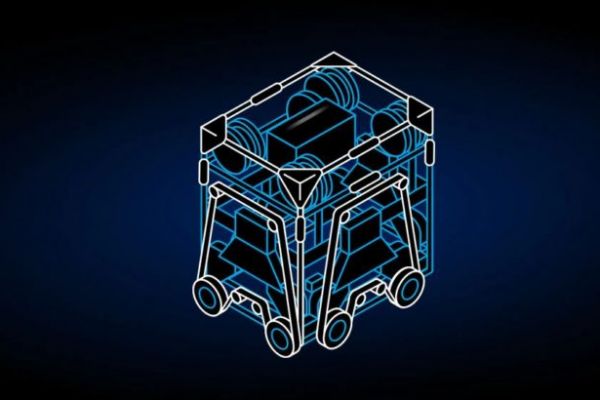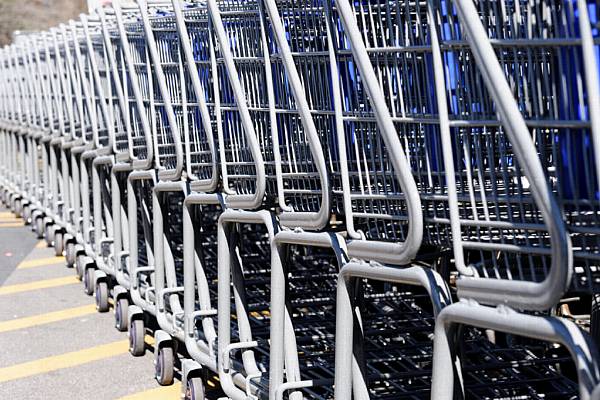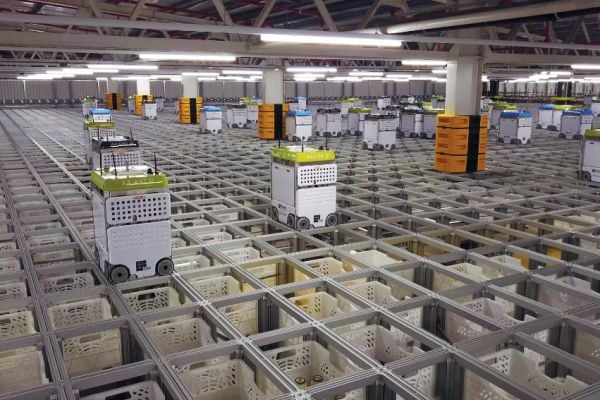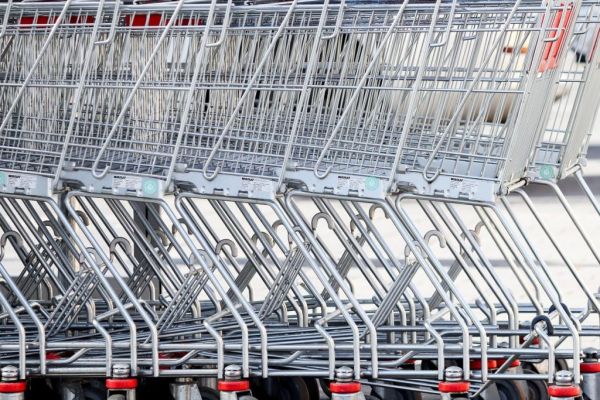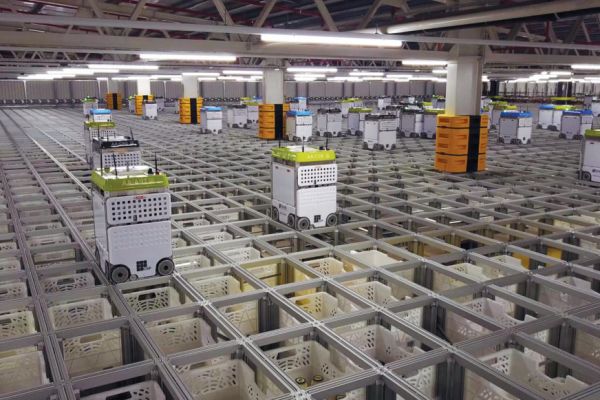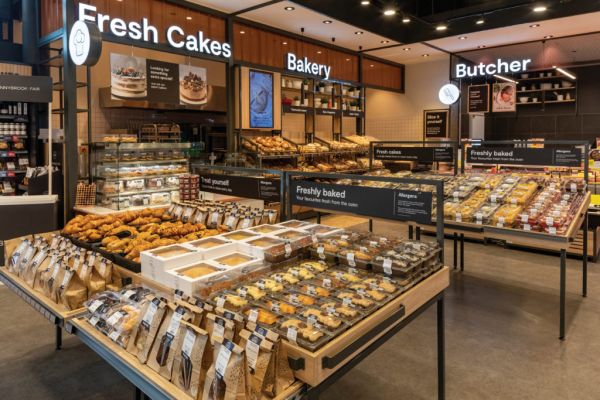At the start of last year, Ocado Group unveiled a new strategy, seeking to underpin its nascent Ocado Smart Platform operations with a new, more responsive fulfilment solution.
Dubbed Ocado Re:Imagined, the strategy sees Ocado support its growing network of customer fulfilment centres (CFCs) around the world – the group is currently working with AEON, Alcampo, Auchan Retail Poland, Bon Preu, Coles, Groupe Casino, ICA, Kroger, Lotte, Morrisons, Ocado Retail, and Sobeys – with a range of seven software and hardware innovations.
Among these is Ocado Orbit, through which products are sourced from multiple, smaller hubs (rather than one mega-hub) and Ocado Swift Router, which will augment the group's short-term delivery services. In addition, add-on solutions such as new, lighter picking robots can be integrated into existing CFCs.
The group is confident that all aspects of the Ocado Re:Imagined strategy will be live by the end of this year, with Tim Steiner, Ocado chief executive, noting in February of this year, "The enthusiasm with which our current and future partners have embraced these innovations demonstrates the link between our Technology R&D and value creation."
At the recent Shoptalk Europe exhibition in Barcelona, Shiri Mosenzon Erez, chief product officer, Ocado Group, took to the stage to discuss how the group is seeking to develop an "end-to-end proposition" which is nimbler, boasts more flexibility and offers "world beating efficiency".
ESM's Stephen Wynne-Jones caught up with her.
ESM Hi Shiri, thanks for talking to us. To start, maybe you could give us an overview of what led to the establishment of Ocado Re:Imagined?
Well, I think we are on a continuous innovation journey at Ocado. And so, this was really Ocado's starting point – solving a specific problem using current technologies. The goal is to solve it effectively and then evolve the solutions further. So this is really a natural next step. It presents a great opportunity for us to use and implement, and step change the economics a bit further.
E-commerce and grocery e-commerce, in particular, operate on thin margins. Therefore, any improvement that makes the platform more efficient in terms of reduced capital expenditure or increased productivity is welcome, and we continue to invest in that.
Ocado is involved in a comprehensive rollout of CFCs in conjunction with retail partners around the world. This however, potentially brings other nodes into the fold, essentially creating a more multi-level offering. How does it work in practice?
The Ocado Re:Imagined technology is essentially an evolution of our robotic solution, incorporating new technologies and integrating them seamlessly.
The way we build it allows us to simultaneously use and test different generations of technology. We don't have to wait for one technology to end before we start utilising it and benefiting from it.
There has been some discussion of the efficiency that Ocado Re:Imagined can bring – reducing labour hours associated with picking times down to ten minutes. I remember seeking Ocado CEO Tim Steiner talk recently about how he didn’t want to compete in the ultra-fast delivery space, as many customers prefer planned delivery slots. Does the introduction of Ocado Re:Imagined mean that Ocado will be in a position to compete better in ultra-fast delivery?
I think it's definitely an enabler. It's helpful from an economic perspective – being able to spend fewer labour hours results in better operational expenditure for retailers on our platform. This, in turn, makes their e-commerce offerings more economical, whether it's for same day, next day, or even on-demand delivery.
We can actually pick an order in less than five minutes with Re:Imagined technologies, and the total labour invested will be closer to 10 minutes with innovations like robotic arms.
While there are still labour costs within the solution, people are performing different tasks. So yes, our ability to work quickly and use automation greatly assists us in fulfilling orders with shorter lead times.
It's important for us to provide retailers with the option for more immediate fulfilment. There's always a challenge in finding the right balance between 15 minutes and within an hour, and determining where the economics really work.
Exactly, finding where the sweet spot lies.
In order to achieve the right economics, you need to balance the use of resources throughout the day. It's a combination of filling up capacity and employing AI and the right algorithms to ensure optimal utilisation of investments and automation. By doing so, you can effectively utilise resources throughout the day.
It’s also about building more personalisation into the offering, right? In that you can prompt shoppers to select the ‘same delivery slot’ as always, things like that?
Yes, it's about being more predictive. There are machine learning models that can accomplish this. We use this technology in applications within our platform and we acknowledge the value they offer in this space as well.
We will definitely look at that as well, because there is almost always room for optimisation, and one of the things we can say to customers is 'we know that you order this usually', or know that a certain percent of the population orders it. So maybe we can plan ahead, and even pick ahead.
In time, is the goal to be able to tailor your fulfilment centres better, to cater for local customers’ needs, and augment that with a wider standardised offering?
Exactly that the whole network effect is really powerful and really important for range extension. It allows customers to have more choices. For instance, if we have various items available at different locations within the network, we can consolidate them into a single basket. Currently, we already implement this approach.
We combine orders from different network locations and transform them into one order. From the customer's perspective, it feels like receiving a single order, even though it has originated from two different places, each offering a distinct range of products.
I guess non-food would be a good example of a segment in which local sourcing might not be as important?
Exactly. Non-food is a very good example of what we use it for today. However, bringing those two together is crucial in order to provide the customer with a seamless experience.
Read More: Ocado Says Kroger Committed To Build More Warehouses Despite Roll-Out Slowdown

ESM editor Stephen Wynne-Jones with Shiri Mosenzon Erez, Chief Product Officer, Ocado Group
You have developed Ocado Smart Platform agreements with 12 retailers around the world now, but I would imagine that Ocado Re:Imagined gives you the potential to work with a lot more, and accelerate quite significantly, because it can work within their existing ecosystem?
There's definitely an opportunity to start small and grow your business, then eventually move to larger sites. The feasibility of this depends on factors such as geography, customer distribution, and delivery logistics. It's important to determine the optimal location for a fulfilment node and find a suitable solution that aligns with the level of trade.
As businesses evolve and expand, their requirements change. Retailers, for example, may begin by fulfilling orders in their stores. However, as the volume increases, it becomes impractical to continue using the store for fulfilment. That's when you move to an automated fulfilment centre, and then you bank the economics of that as well.
It opens up your offering to stores that weren’t part of the ‘Ocado Smart Platform universe’, so you can put some structure on what they are doing?
It's a competitive offering that we have, and it proves to be really helpful for our partners. For instance, in Spain, we have Alcampo and Bon Preu.
Alcampo is currently utilising the store solution, but they will soon be opening a customer fulfilment center, so they're going to have both. The potential is huge.
Read More: Ocado Partners With Lotte Shopping In South Korea
© 2023 European Supermarket Magazine – your source for the latest Technology news. Article by Stephen Wynne-Jones. Click subscribe to sign up to ESM: European Supermarket Magazine.
